- Renewed technology selloff after Snap's profit warning
- Investors' hopes dashed that improved trade with China might boost markets
- Bitcoin slump continues
Key Events
On Tuesday, futures on the Dow Jones, S&P 500, NASDAQ 100, and Russell 2000 fell as a profit warning from social media giant, Snap (NYSE:SNAP) reignited the market selloff.
Despite the positive reaction on Monday to the outlook for improved trade with China, last week's worries on economic growth, following weaker results from Target (NYSE:TGT) and Walmart (NYSE:WMT), have snapped back. As a result, the S&P 500 looks likely to reach a level 20% lower than its high, the definition of a bear market.
Gold advanced while the dollar slipped.
Global Financial Affairs
Snap's warning that the economic slowdown will dent its Q2 results sent shares of the social media giant down 30% in pre-market trading. The news sent all US futures lower with contracts on the NASDAQ 100 sliding 1.8%.
The outlook for future earnings from Snap fits well with a broader theme we've recently mentioned frequently. Tech stocks tend to sell off first in a rising interest rate environment as investors seek value in cyclical stocks. The rising cost of money makes it more challenging to justify the high valuations in the tech sector. Therefore, Dow Jones-listed, traditional industries are outperforming as investors refocus on the ongoing increase in global inflation as well as rising rates.
This is why the technology sector is also the worst performer on the STOXX 600 Index today.
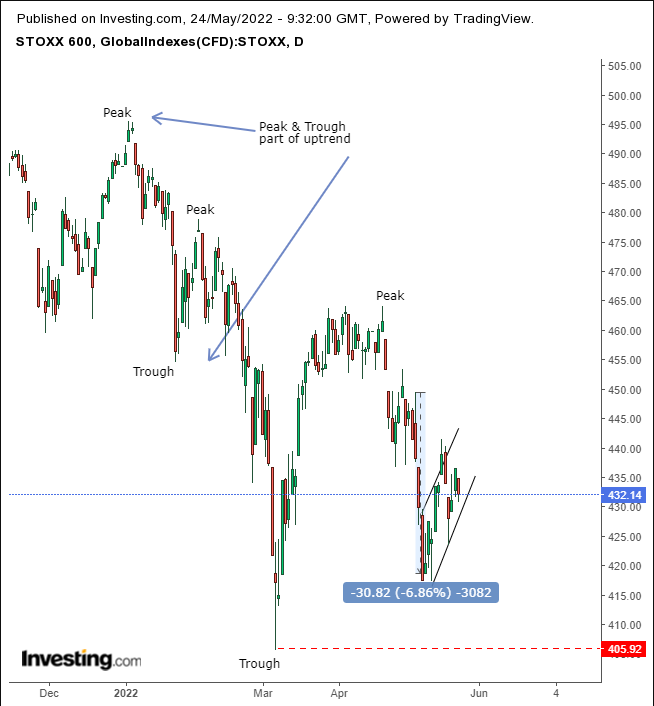
The pan-European index may be forming a Rising Flag, bearish following the initial plunge. If there is a downside breakout, completing the pattern, the benchmark will be on a path to test the Mar. 7 low. A lower trough would extend the peak-trough downtrend and satisfy even conservative technicians, with two highs and lows independent of the previous trend.
Markets in Asia also closed in the red. China continued to suffer amid its ongoing coronavirus crisis. The Shanghai Composite plummeted 2.4%.
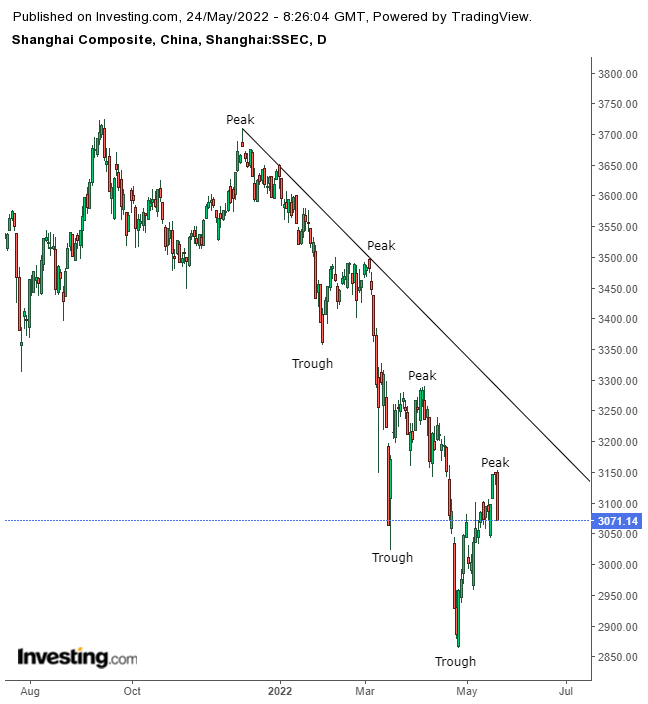
Another such decline would extend the downtrend with another lower peak.
Australia's ASX 200 dug in its heels, losing only 0.28%. The technology sector in the land down under fell 2.9%, but a rally in real estate and bank stocks offset the slump. However, the risk appears to be to the downside for the regional benchmark.
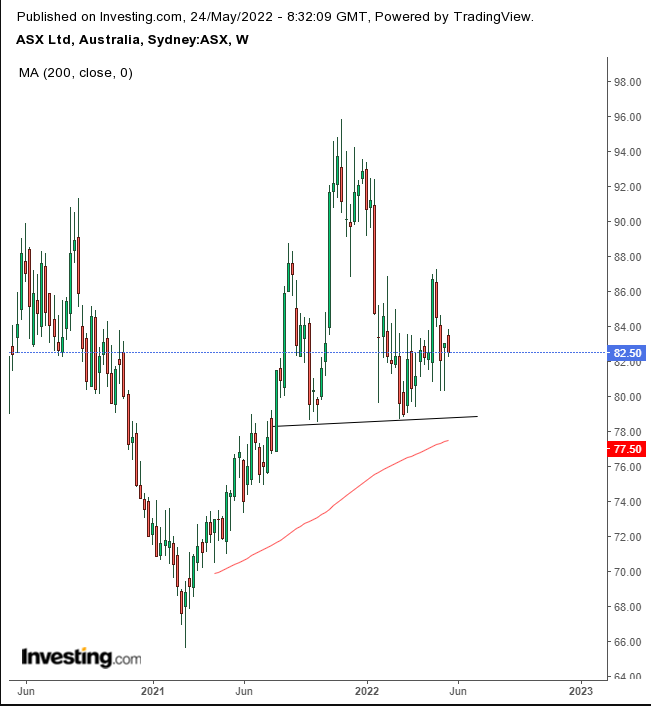
The index has been developing an H&S top since August 2021, with the 200-week MA realigning with the neckline.
Yields on the US 10-year Treasury note fell as investors moved into the safety of the bond market. However, there is a view emerging that the negative correlation between stocks and bonds could be coming to an end.
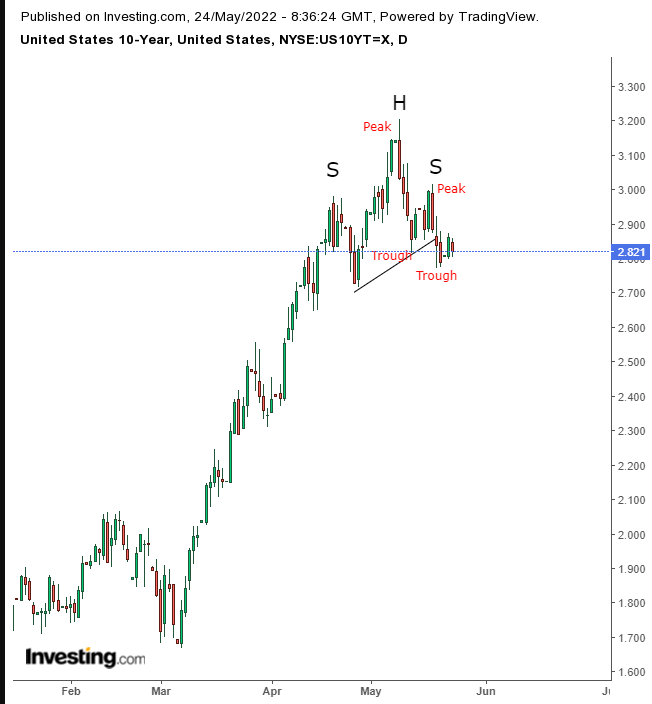
After indicting rising rates, increasing yields since the March bottom flipped the correlation with stocks to negative. However, investors turned to Treasuries for their traditional haven status amid the recent sharp equity selloffs.
The dollar fell for a second day.
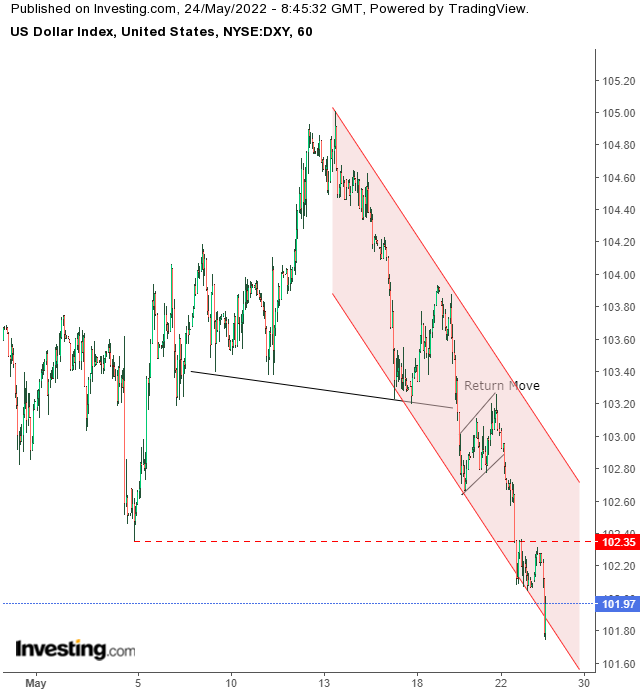
Yesterday, we attributed the weakness to ECB President Christine Lagarde's comments about ending negative rates and the euro's haven status, which was scoffed at amid an equity rally. However, today's risk-off mood hasn't pushed the greenback higher, leaving only a strengthening euro—the dollar's single largest currency opponent—and bearish technicals.
The USD fell to a monthly low, extending the short-term downtrend.
Dollar weakness, as well as better technicals, paved the way for an extension of the rally in gold—its fourth straight-up day.
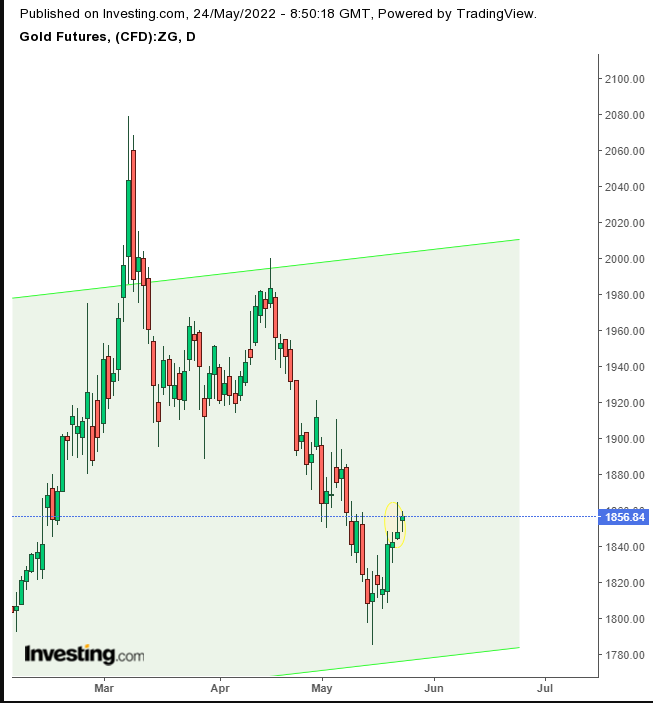
The yellow metal protracted the bounce from the bottom of its Rising Channel since its March 2021 low, though beware of Monday's Shooting Star. A shooting star occurs when bulls fail to advance. However, confirmation is required. If today's close is below yesterday's high, it may reinforce the Shooting Star's resistance, though a close below the single-candle pattern will confirm a reversal.
Bitcoin remains under pressure—and back under $30K at time of writing—after yesterday's drop which erased two days of gains.
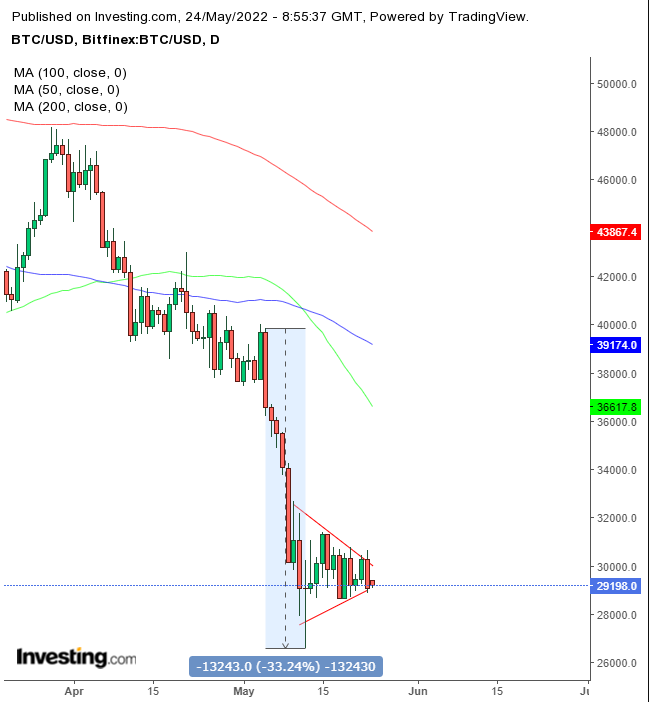
The digital currency may be trading according to a pennant, a continuation pattern. Therefore, there is a higher likelihood of a downside breakout following a five-day straight drop.
However, the price appears to meander through the apex, which could mean there is no guiding force amid this congestion. Unless there is a decisive downside breakout, this isn't a pennant. If, however, the pattern will follow through, it would complete the most oversized top the leading cryptocurrency has developed yet.
Oil declined for the second day, then recovered, after hitting its highest level since Mar. 24.
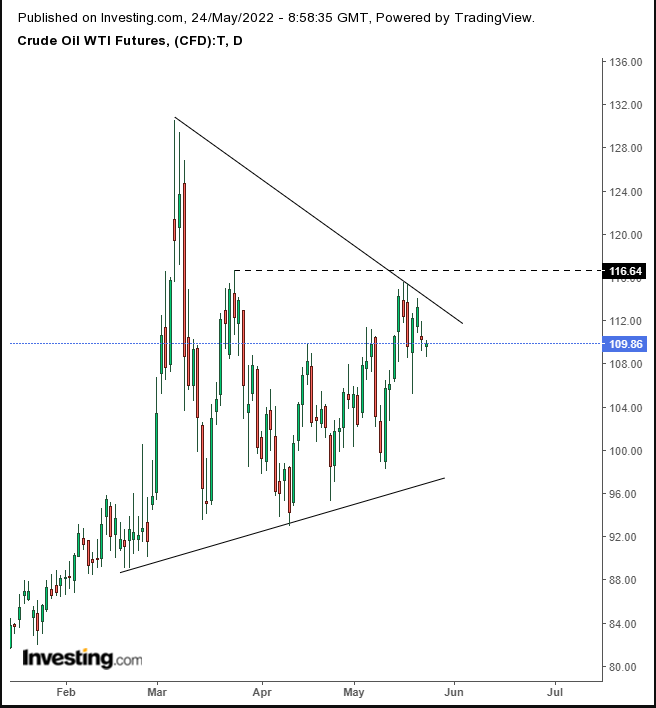
The price of WTI may be developing a Symmetrical Triangle, whose bias is to break in the direction of the underlying trend. However, given that both demand and supply become entrenched in their position, only a decisive breakout would provide a viable signal—in the direction of the move.
Up Ahead
- The Reserve Bank of New Zealand rate decision Wednesday
- The US FOMC minutes are released on Wednesday
- On Wednesday, the ECB publishes its Financial Stability Review
Market Moves
Stocks
- The MSCI Asia Pacific Index rose 0.2%
- The MSCI Emerging Markets Index was little changed
Currencies
- The Japanese yen rose 0.35% to 127.43 per dollar
- The offshore yuan rose 0.3% to 6.6816 per dollar
Bond
- Germany's 10-year yield declined one basis point to 1.00%
- Britain's 10-year yield fell three basis points to 1.93%
Commodities
- Brent crude rose 0.16% to $110.96 a barrel
- Spot gold rose 0.30% to $1,859.10 an ounce
